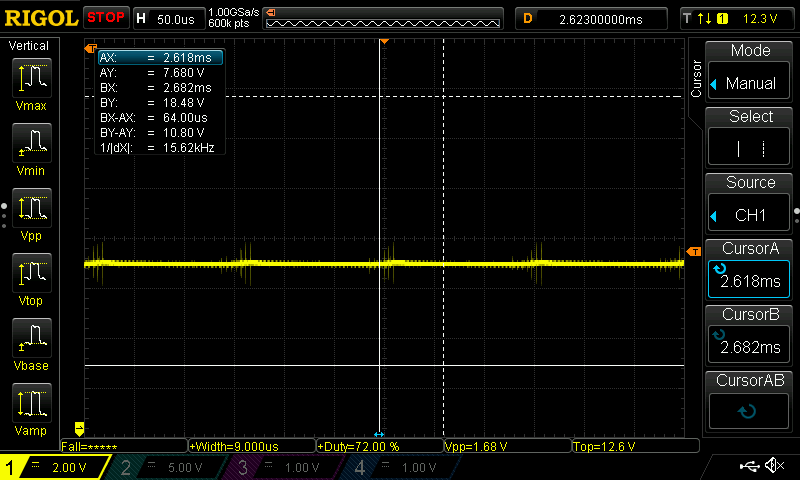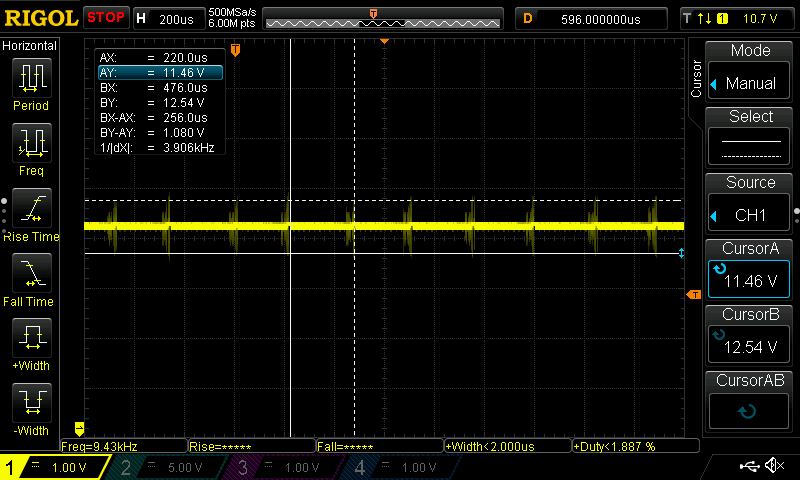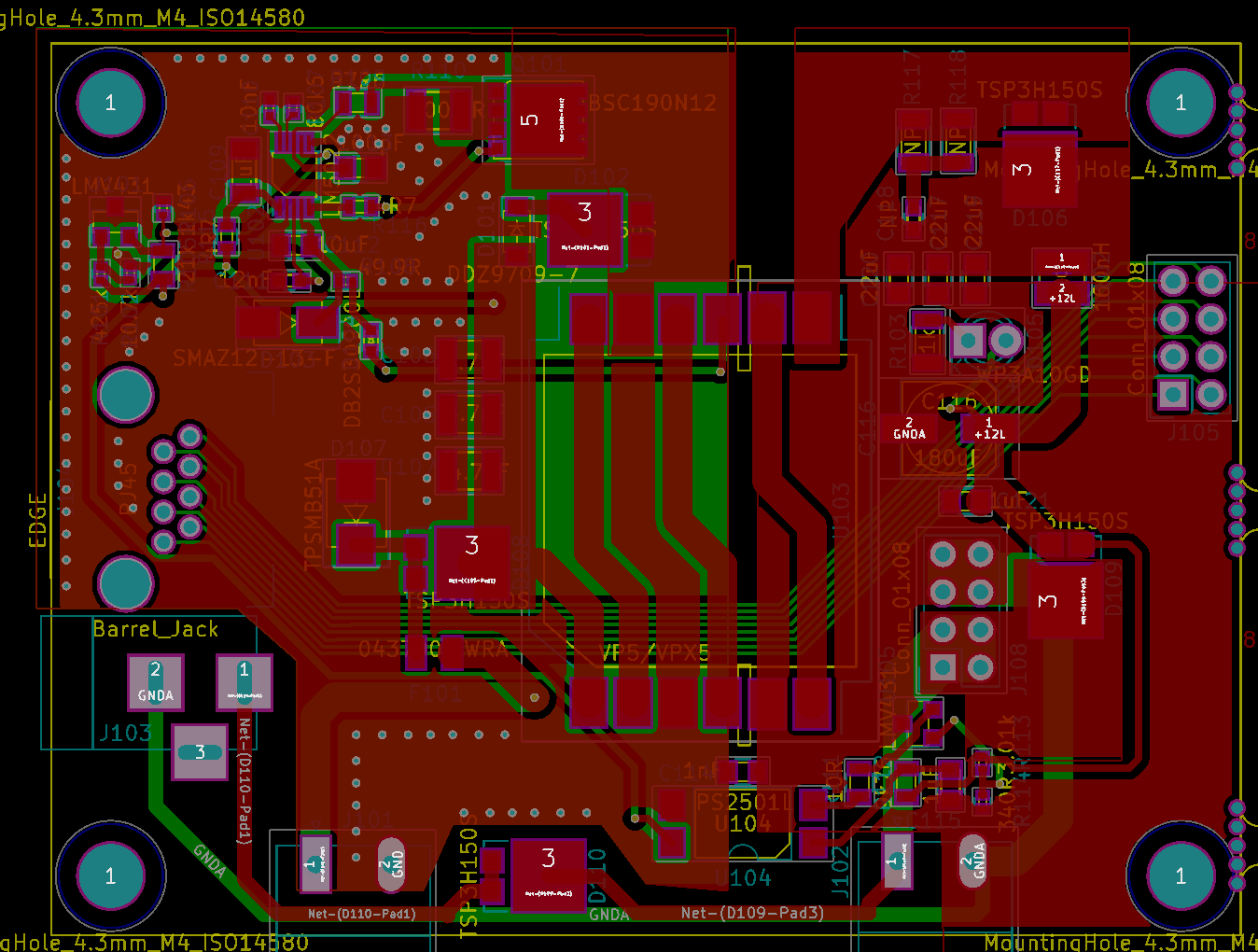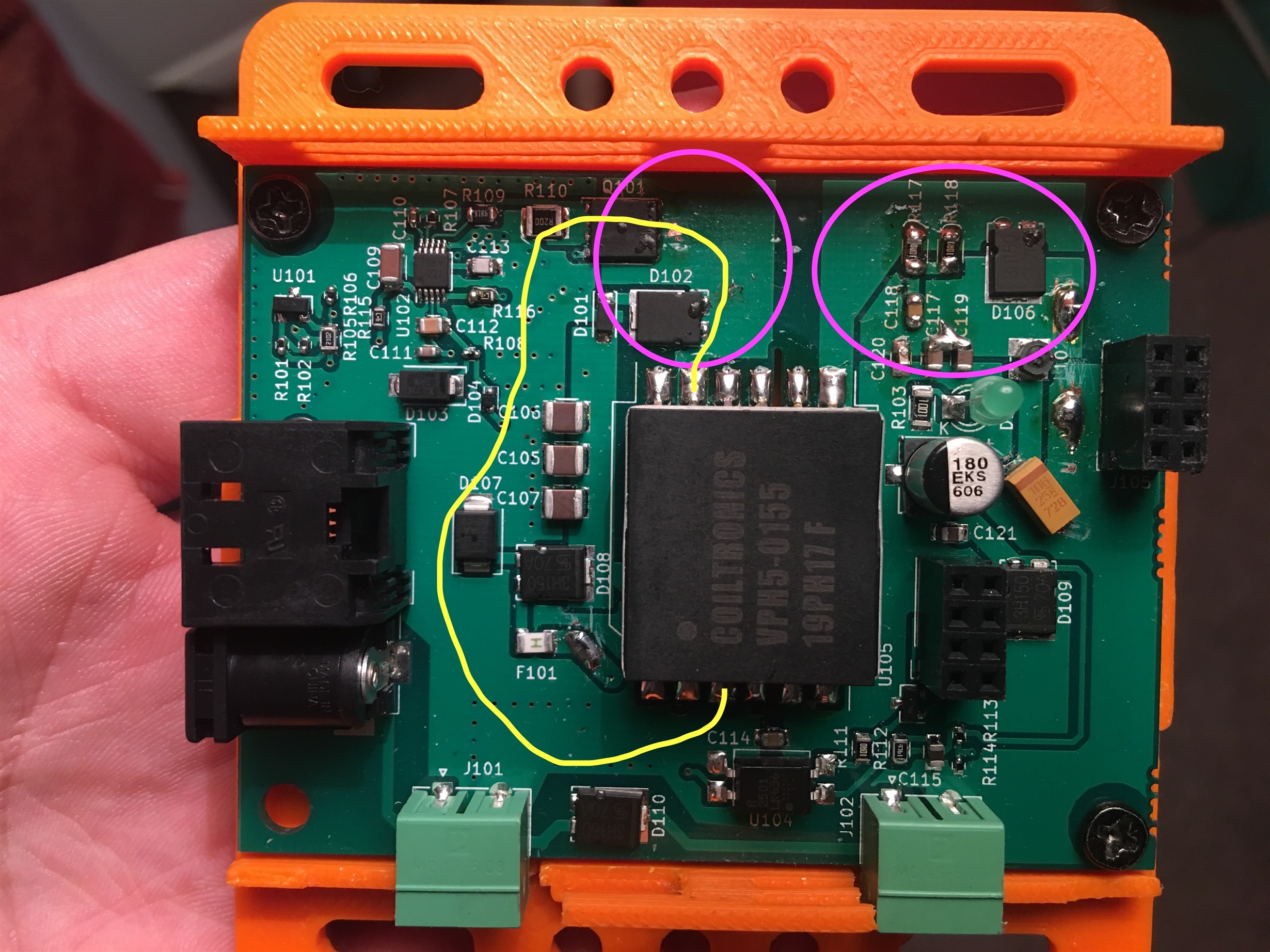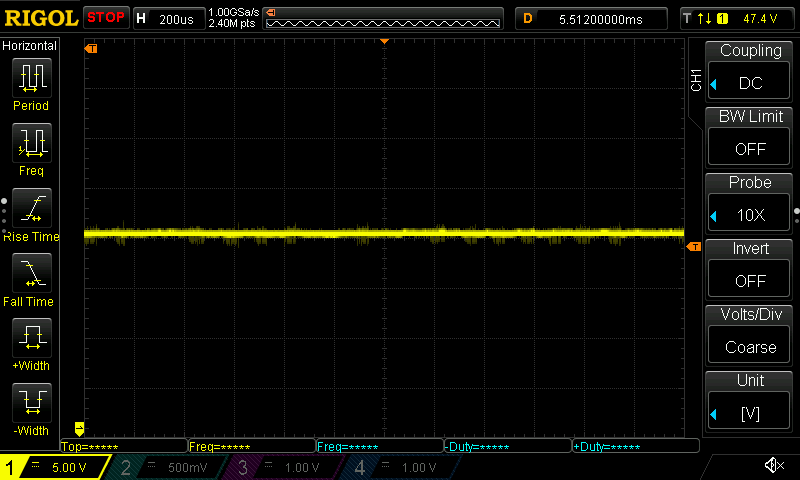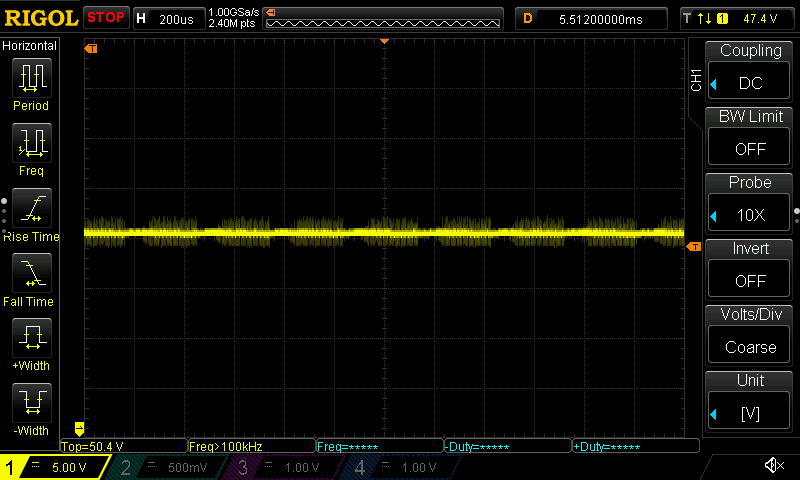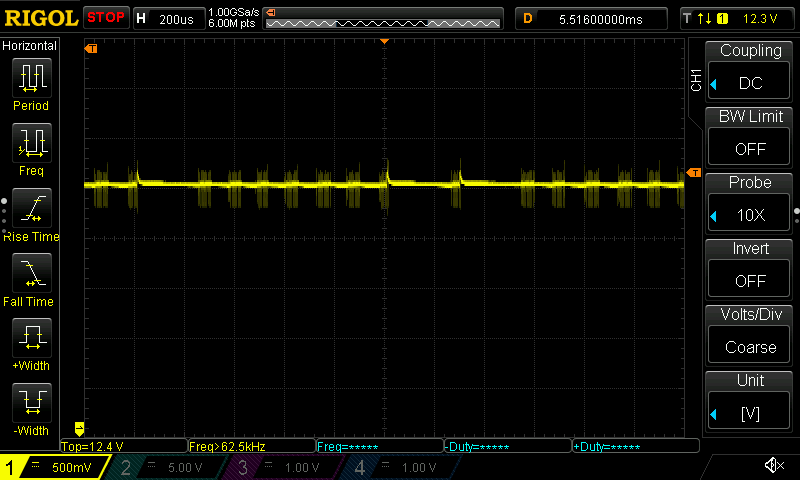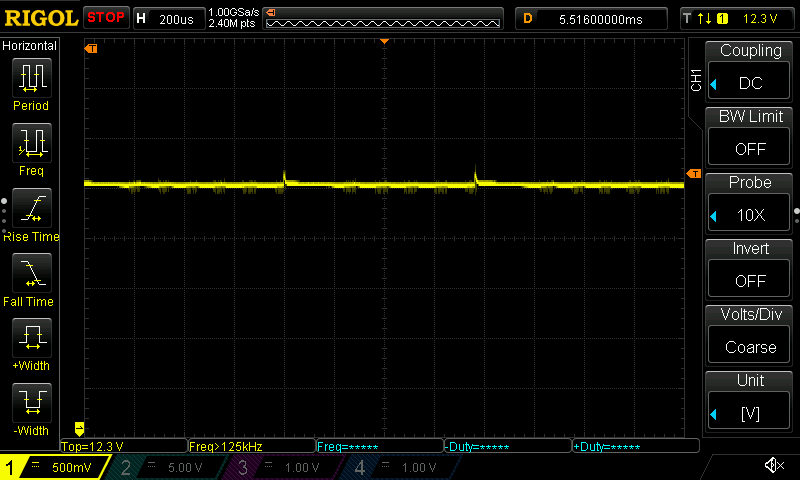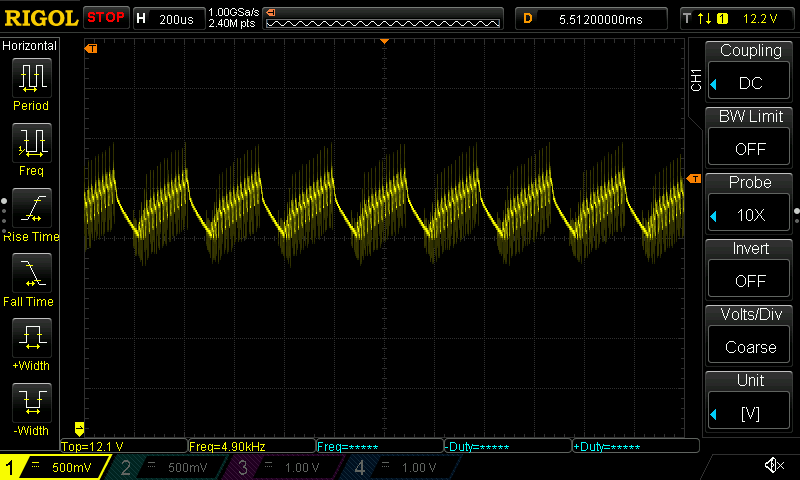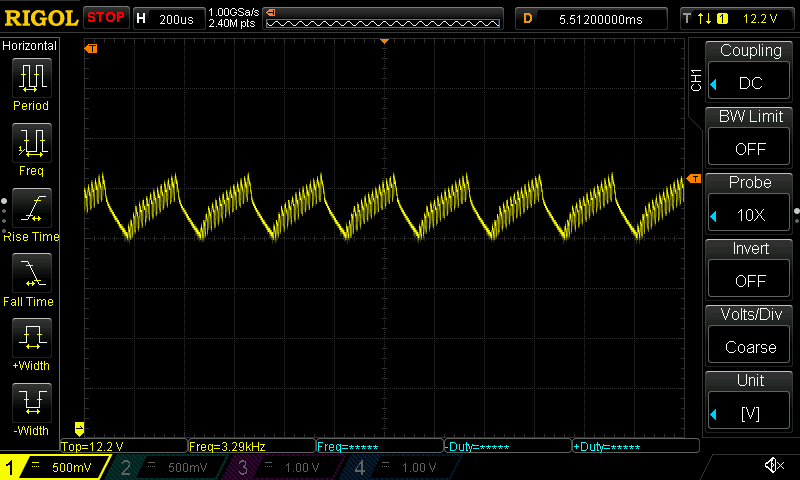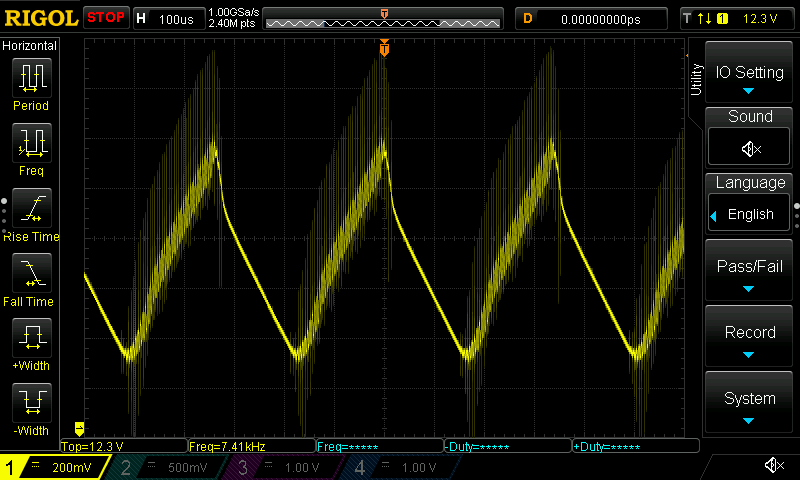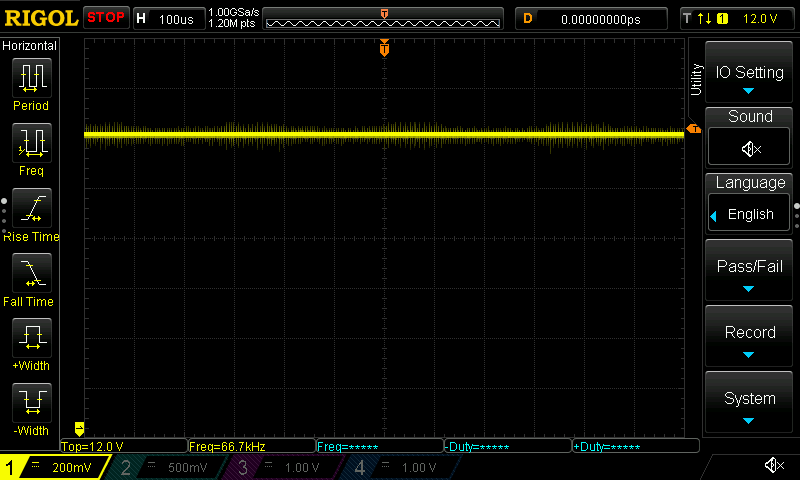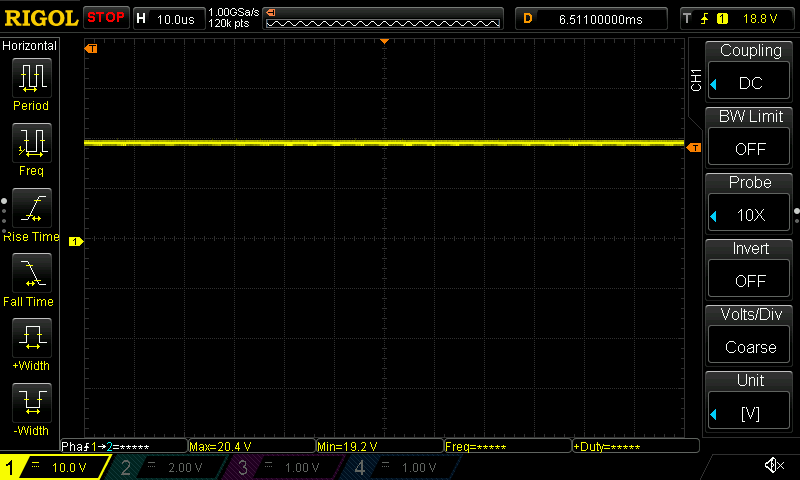Other Parts Discussed in Thread: PMP20551, LM3481, , LMV431
Hi here,
The forum didn't allow me to select the Isolated DC/DC Forum, I do apologize. I used Webench to help me design a Isolated DC/DC Converter, I added in some additional filtering, some bulk capacitance on the input, a LC filter on the output and a over voltage input protection cutoff circuit stolen from PMP20551.
The design requirements were:
Vout:12v
Iout:0.9A
Vin 20-50V
Attached is the Schematic, as well as the PCB layout.
There was a tiny amount of noise on the output, so I added a 100uF tantalum I had laying around on the output, and replaced one of the 22uF MLCC output caps with a 0.1uF which seemed to solve the problem. One of the majorly annoying perks of the design was an audible high pitched noise, which was quiet (but noticeable, more a fuzz sound) at no load, and when a load was applied it got much louder. I attempted to locate the source of the noise with a rolled up piece of paper, but was unsuccessful in pinpointing the source. Applying firm pressure to the transformer seemed to dull the sound. (The transformer I used was a Coiltronics VPH5-0155-R with 2 windings in series for the primary, secondary and auxillary).
The attempts made to try and reduce/get rid of the noise include:
- Extra filter capacitors after the output diode
- RC snubber across the output diode
- Bypass the resistor on the Gate of the mosfet
Which all didn't reduce the noise, but did change the audible frequency slightly.
So I'm wondering if its a poor PCB layout, or I've somehow made it unstable or that there will always be noise due to the transformer.


